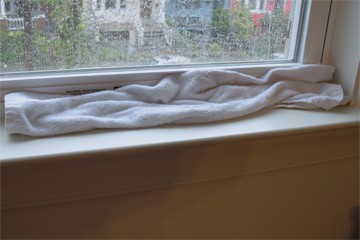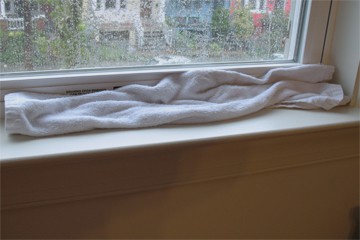


One of the most important functions of your Long Island house’s windows is to keep the outside elements from getting into your home. If you see water puddling on your window sill or staining your drywall or trim, you know you have a problem. Similarly, if you feel drafts around your windows, you may want to consider that if there’s air leaks, there are likely water leaks too. Air and water leakage around windows is a common issue for Nassau, Suffolk, Queens and Brooklyn homeowners and is often the culprit if you discover that your energy costs are skyrocketing or your home becomes uncomfortably hot or cold during seasonal temperature fluctuations.
In today’s post from Renewal by Andersen of Long Island, we’re going to discuss the issues of air and water leakage, including how to tell if your windows are leaking, the problems that can arise in your home as a direct result of that leakage, and how to tell where the leak is coming from.
How To Know If Your Windows Are Leaking
Well, the first step of solving any problem is determining what, in fact, the actual problem is. When it comes to window leakage, there are two main types: either air or water.
Air Leakage Around & Through Your Long Island Home’s Windows
We’ll start by discussing air leakage, and how you can determine whether or not you have this issue with your windows. Air leakage is not something that can be discovered simply by looking at your window. It’s a problem that you are far more likely to feel than to see. If your home has suddenly become uncomfortable because the temperature won’t remain constant or because you’re beginning to feel drafts as you sit on the couch watching TV or reading, these could be signs of air leakage coming from your home’s windows. There are a few ways to determine of a window is causing these problems. Check your windows either by holding a match a few inches away from them (be careful to remove any window coverings) or by putting up a light curtain that will move in a slight breeze. If the window is closed and the match goes out quickly, or the curtains flutter a little bit when no one is near them, this is a sure sign that air is coming through your windows.
Air Leakage Problems
One of the biggest problems with air leaking through your windows is what you feel. As mentioned previously, air leakage and drafts disrupt the temperature and comfort of your home. Beyond comfort issues, drafty windows could also be costing you money without you even realizing it. Drafty windows are very inefficient when it comes to energy, and by upsetting the temperature of your home and forcing you to alter the heat and air conditioning constantly, these leaky window frames are raising your heating and cooling bills. In effect, you’re throwing money out the windows.
Water Leakage
The second type of leakage that could be affecting your windows is water leakage. Unlike air leakage, which while costing you energy dollars and making you uncomfortable, these are minor issues compared to water damage. Water leakage can be a real health and safety problem that can go unnoticed until it’s too late. If you can look at your window and see that water has come in, or you can see clear signs of water damage, usually noticed as discolored or peeling paint on the windows or walls, that’s all the evidence you need to know you have a water leakage problem. If you can see the surface effects, you can be sure there’s likely more damage you can’t see. Moisture inside your walls can cause a host of health and safety problems from mold and bacteria growth to rot and insect damage to the structural framing of your home. These are serious issues, so it’s imperative that water leaks be dealt with as quickly as possible. Covering up the symptoms by repainting is not an adequate solution as the underlying causes are still occurring silently and can lead to catastrophic failure.
Water Leakage Problems
Water coming in through your windows presents a lot of concerns. Not only can the water physically and aesthetically damage your windows, but large and frequent leaks can damage the structural integrity of your window and even your entire wall. All of the incoming water weakens the structure surrounding your window, but it can also cause other problems like damage to your floors or furniture, or even reach an electrical circuit. Add on other potential troubles like the facilitation of moss and mildew growth, and you’ve got a leak that needs to be stopped.
Where Are Your Windows Leaking?
Particularly with water leakage, the most important part is finding where the leak is coming from. Only when you’ve determined whether the unwanted air and water is coming through either around the glass, around the sash, or around the frame, can you begin the repair process. When inspecting these parts of your windows, be sure to look for the obvious signs of water damage like damp or decaying wood. Damaged caulk may also be causing your leaks, and can be fixed by re-caulking the area. However, if it appears that the damage is severe, your best solution is to contact a reputable contractor who will help you determine the appropriate course of action to take to remedy the situation. Beware that this can become costly as your contractor may need to open up entire walls to find the source and get rid of any damage that has already occurred. It’s important that you act quickly, as every day that the problem goes untreated means that the problem gets worse (and more costly).
Need some more information on how leaky windows could be affecting your home? Renewal by Andersen of Long Island is your replacement window expert. As a subsidiary of Andersen Windows, we’ve been manufacturing windows for generations, and nobody knows the business like we do. Be sure to contact one of our experienced design consultants who will help you through any step of your window experience. Call us at (866) 609-5033 for a free design consultation.